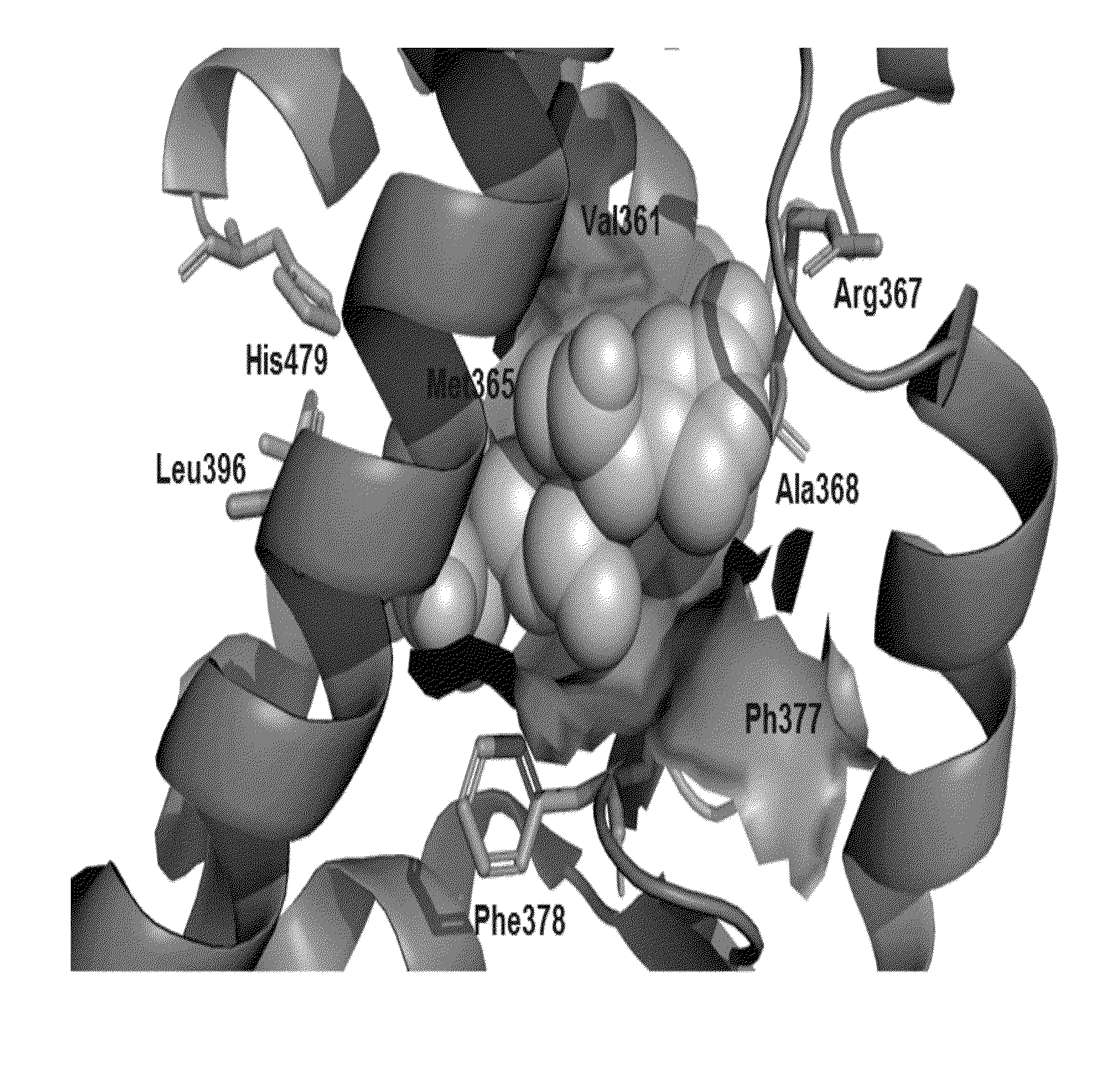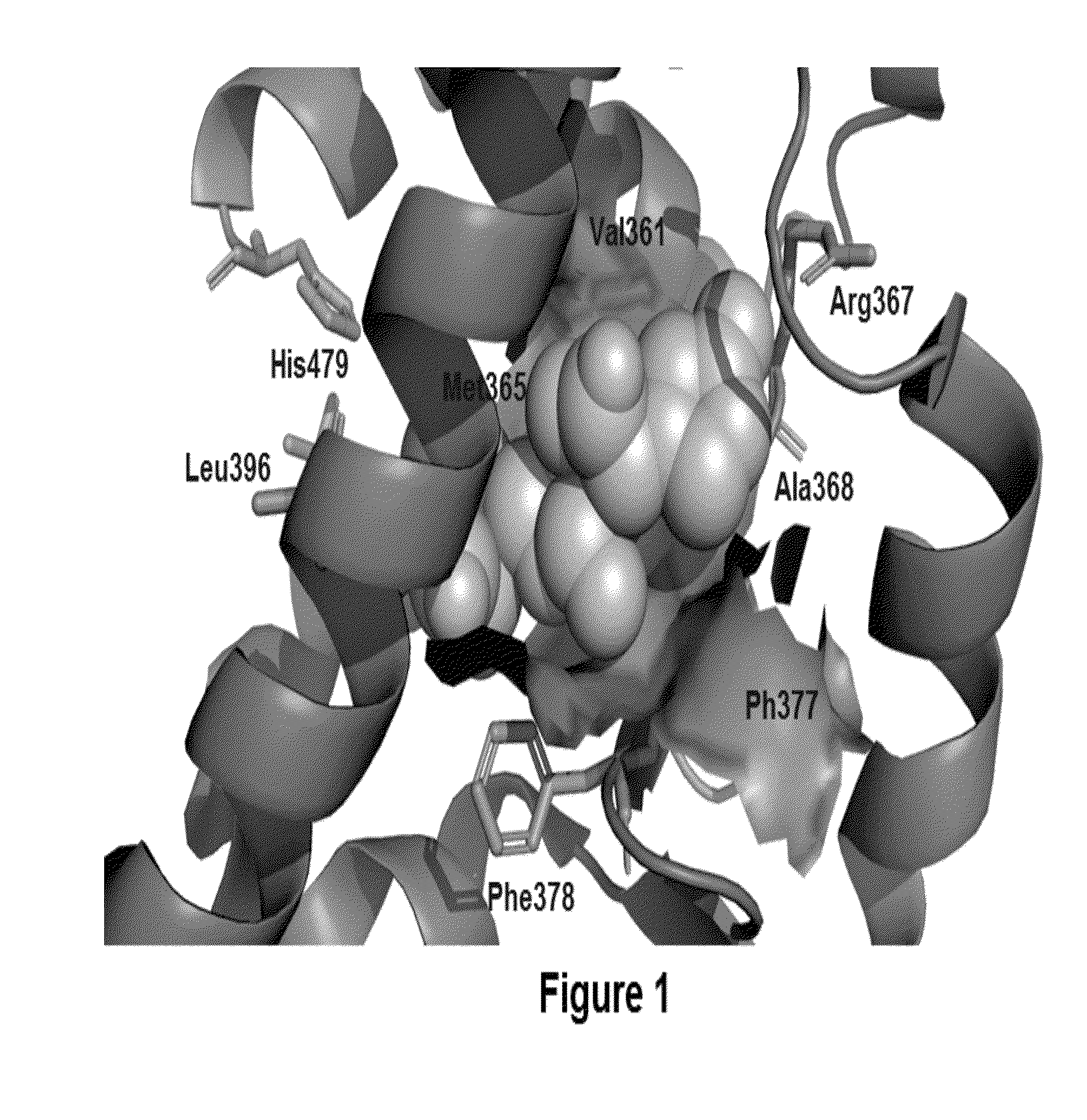Substituted 2,3-dihydro-1H-inden-1-one Retinoic acid-related orphan nuclear receptor Antagonists for Treating Multiple Sclerosis
a technology of retinoic acid and receptor antagonists, which is applied in the direction of biocide, immunological disorders, drug compositions, etc., can solve the problems of affecting the quality of life of each individual, affecting the quality of life of individuals in substantial and adverse ways, and affecting the quality of life of individuals
- Summary
- Abstract
- Description
- Claims
- Application Information
AI Technical Summary
Benefits of technology
Problems solved by technology
Method used
Image
Examples
experimental details and examples
[0127]Melting points were determined in a MP-96 digital Polmon apparatus. 1H NMR and 13C NMR spectra were recorded at RT in CDCl3 or DMSO-d6 at Jeol 400-MHz NMR spectrophotometer using solvent peaks for CDCl3: 7.27 and DMSO-d6 2.50 (D) as internal references. The assignment of chemical shifts is based on standard NMR experiments (1H, 13C). Mass spectra were recorded on a Shimadzu LCMS LC-210EVspectrometer with an API-ES ionization source. Jasco-FTIR-4100 was used to record the IR spectra. TLC analyses were performed on silica F254 and detection by UV light at 254 nm, or by spraying with phosphomolybdic-H2SO4 dyeing reagent, KMNO4 or iodine. Column chromatography were performed on silica Gel 60 (230 mesh). Purifications and separations were performed on a standard silica flash chromatography system. The purity of the samples has been determined by HPLC for the % area peak corresponding to the retention of compound and elemental analysis for C, H, N and O was carried out using Perkin-...
example 1
6-methoxy-5-morpholino-2,3-dihydro-1H-inden-1-one (13)
[0129]
[0130]Step 1:
[0131]A solution of 5-bromo-6-methoxy-2,3-dihydro-1H-inden-1-one (11) (1 g, 4.149 mmol) and morpholine (0.36 g, 4.149 mmol) in toluene 15 mL was added cesium carbonate (2.69 g, 8.298 mmol). The reaction was degassed and purged with nitrogen for 10 min. Pd2 (dba)3 (189.3 mg, 0.207 mmol) and BINAP (64.5 mg, 0.103 mmol) was added, degassed and purged and with nitrogen for another 10 min. The reaction was heated to 110° C. overnight under sealed microwave vial. After completion of the starting material, the reaction was diluted with chloroform and filtered through celite bed. The organic layer was concentrated to get the crude compound 13 and the resulting crude was purified through flash chromatography by using 100-200 mesh silica gel eluting the compound at 25% ethyl acetate in hexane as pale yellow coloured solid 6-methoxy-5-morpholino-2,3-dihydro-1H-inden-1-one 13. 1HNMR (400 MHz, CDCl3) δ ppm 7.70 (s, 1H), 7.2...
example 2
2-(4-chloro-2-fluorobenzyl)-6-methoxy-5-morpholino-2,3-dihydro-1H-inden-1-one (16)
[0132]
[0133]Step 2:
[0134]To a solution of compound 13 (150 mg, 0.607 mmol) in toluene 15 mL was added 14 (86.2 mg, 0.607 mmol). p-Toluene sulphonic acid (PTSA) (230.9 mg, 1.214 mmol) was added to the reaction mixture, and stirred at 120° C. for 6 h. The reaction mass was diluted with ethyl acetate and washed with water (3×25 mL). The organic layer was dried over sodium sulphate and concentrated to get the crude compound 15. The crude compound 15 was purified through flash chromatography by using 100-200 mesh silica gel. The compound (E)-2-(4-chloro-2-fluorobenzylidene)-6-methoxy-5-morpholino-2,3-dihydro-1H-inden-1-one 15 was eluted at 28% ethyl acetate in hexane to afford a yellow coloured solid.
[0135]Step 3:
[0136]Compound 15 (45 mg, 0.121 mmol) was dissolved in methanol and was added Pd / C 20 mg and stirred the reaction under hydrogen balloon for 6 h. The reaction was filtered through celite bed and wa...
PUM
| Property | Measurement | Unit |
|---|---|---|
| temperature | aaaaa | aaaaa |
| temperature | aaaaa | aaaaa |
| pH | aaaaa | aaaaa |
Abstract
Description
Claims
Application Information
 Login to View More
Login to View More - Generate Ideas
- Intellectual Property
- Life Sciences
- Materials
- Tech Scout
- Unparalleled Data Quality
- Higher Quality Content
- 60% Fewer Hallucinations
Browse by: Latest US Patents, China's latest patents, Technical Efficacy Thesaurus, Application Domain, Technology Topic, Popular Technical Reports.
© 2025 PatSnap. All rights reserved.Legal|Privacy policy|Modern Slavery Act Transparency Statement|Sitemap|About US| Contact US: help@patsnap.com



